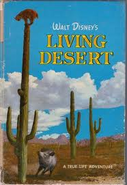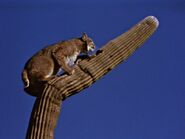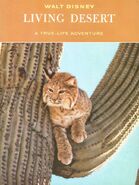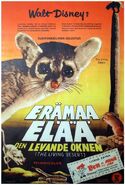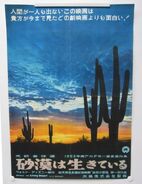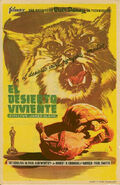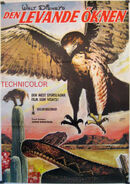The Living Desert is a 1953 nature documentary showing the everyday lives of the animals of the desert of the southwestern United States. The movie was written by James Algar, Winston Hibler, Jack Moffitt (uncredited), and Ted Sears. It was directed by Algar and produced by Walt Disney Productions. Hibler is the narrator.
It won the first Academy Awards for Best Documentary Feature. [1] In 2000 the United States Library of Congress deemed the film "culturally significant" and selected it for preservation in the National Film Registry. It was released on video in 1986 and then 1993.
Production[]
The Living Desert was put into production after Walt Disney was presented with footage of the life-cycle of the tarantula hawk, a desert wasp that attacks tarantulas to lay their eggs inside their bodies. The dramatic footage inspired Disney to produce a full desert wildlife film, with much of the production being shot outside Tucson, Arizona, around Saguaro National Park and what is now Arizona-Sonora Desert Museum. Many animals that were featured in the film, but not in the Desert Museum's living collections, were donated by Disney to them after production wrapped.[2]
International release[]
| Country | Title | Distributor | Date of release |
|---|---|---|---|
| Japan | 砂漠は生きている | Daiei Film | January 14, 1955 |
Cast[]
- Winston Hibler - Narrator
Trivia[]
- The film's copyright was renewed on May 11, 1981.[3]
- The Living Desert is one of the four True-Life Adventures films to influence the content of Mine Train Thru Nature's Wonderland and its eventual successor Big Thunder Mountain Railroad.
Gallery[]
References[]
- ↑ "NY Times: The Living Desert". Retrieved on 2008-11-08.
- ↑ https://tucson.com/news/blogs/morgue-tales/tales-from-the-morgue-desert-museum-s-first-year-a/article_8b1336de-b7d1-11df-a1d2-001cc4c03286.html
- ↑ Online Copyright Catalog search (form autofilled, pressing "begin search" brings up the entry)
External links[]
- The Living Desert at the Internet Movie Database

